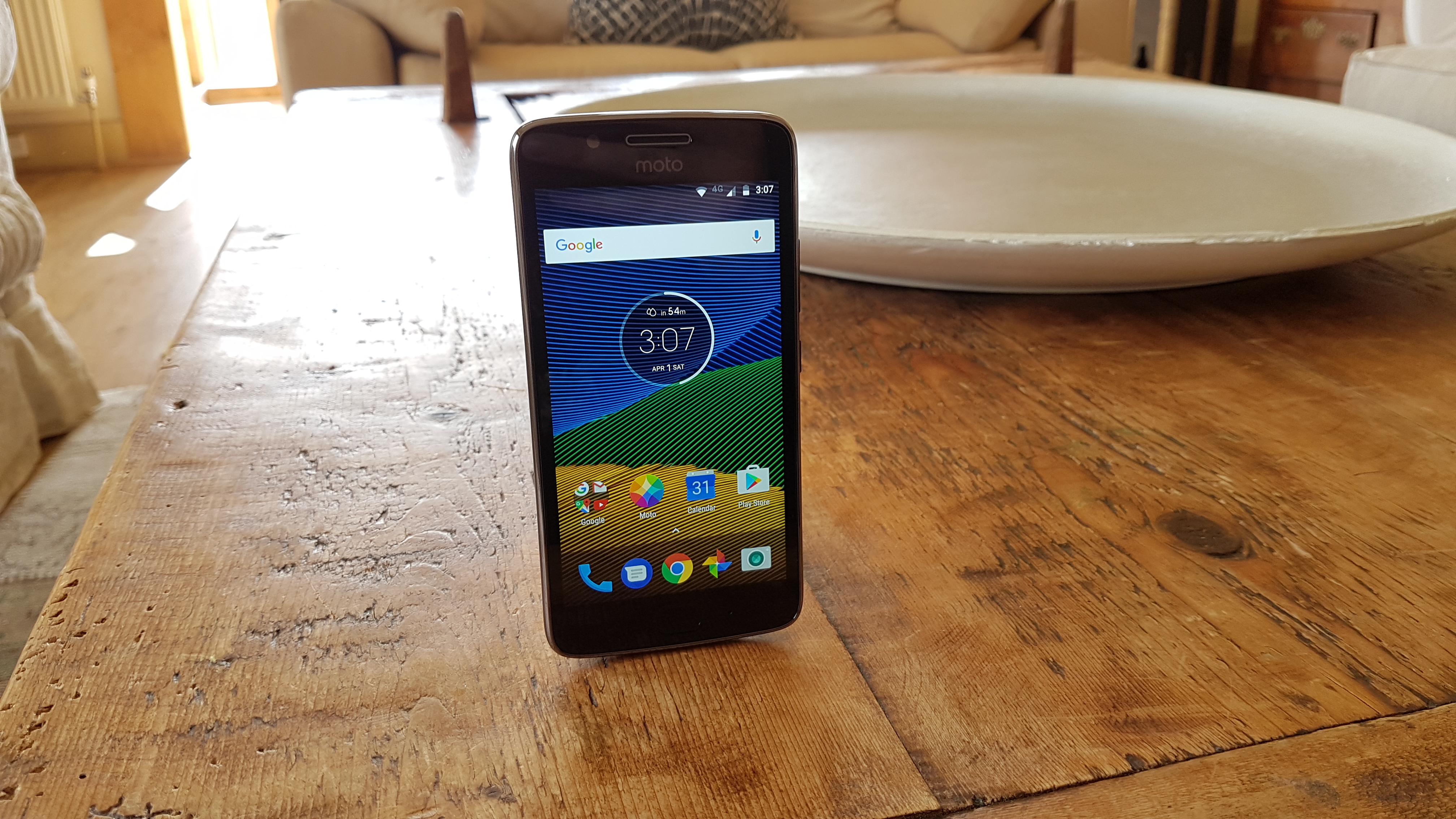Why you can trust TechRadar
Interface and reliability
- Near stock Android but with a handy Moto app
- Slick fingerprint sensor can replace nav buttons with swipes
- Runs Android Nougat and upgradeable to Android Oreo
It’s nice to see near-stock Android 7.0 Nougat on the Moto G5 out of the box. At launch this was the latest Android version, and Motorola has since brought Android 8 Oreo to the phone. However, this could be the end of the line for it, as the Moto G5 isn't currently expected to get Android 9 Pie.
We’re glad Lenovo has gone with Google’s suite of apps. Chrome is a solid browser, Photos allows you to automatically back up your precious pictures and videos, and there’s simply no need for the inferior duplicate apps that a lot of manufacturers include.
Android is slick, attractive, and accessible nowadays, with plenty of useful features baked in, so there isn’t any need for a lot of extras on top. It’s quick and easy to navigate around on the Moto G5 and we had no problems with the interface.
If you’ve used Android before, everything will be familiar. The settings and notification shade are the same as stock, the only major interface tweak in this version is the fact that you swipe up from the bottom dock to open your app drawer.

What Lenovo has added is mostly good. The Moto app gives you the ability to use some handy gesture shortcuts and have the display show basics like the time without you having to bring the full screen to life. We’ll go into detail on the camera app later.
The star of the show here, without a doubt, is the fingerprint sensor with something Lenovo calls “One-button nav”.
It allows you to reclaim some screen real estate by removing the on-screen navigation buttons and using the fingerprint sensor instead. Simply tap it to return to the home screen, swipe left to right to go back, or right to left to open recent apps.
Movies, music and gaming
- 5-inch display is crisp and colourful
- Speaker sounds terrible, but there’s a 3.5mm headphone jack
- Snapdragon 430 is not the smoothest for gaming
While it isn’t going to blow you away, the Moto G5’s 5-inch screen is perfectly adequate. We didn’t have any issues reading or watching videos on it.
Crank the brightness up outdoors and it remains legible. It doesn’t hit Super AMOLED highs, but the colours look convincing enough and it works just fine for YouTube or Netflix.
The single speaker is an obvious weakness. It sounds tinny and rumbly and it vibrates the Moto G5 if you turn the volume up beyond halfway.
That’s not much of a surprise in a budget phone, but you will definitely want to use the 3.5mm headphone port for listening to music or enjoying movies.

For casual gaming, the Moto G5 will suffice. We had no issues with Super Mario Run, for example, but Asphalt 8 didn’t fare quite as well. We were able to play on the highest graphical settings, but it did drop frames from time to time. The loading speeds for games were also quite slow.
One issue that you might bump into, especially if you like to load movies or music onto your phone or install big games, is the lack of storage space.
The Moto G5 has a 16GB capacity, but only 10GB is available out of the box. Thankfully, there is a microSD card slot that supports cards of up to 128GB.
Benchmarks and performance
- Plenty of power for basic tasks
- A little slow to load and quit apps and games
The Moto G5 pairs a Snapdragon 430 chipset with an Adreno 505 GPU. It feels like enough power for the majority of basic tasks. Browsing the web, typing messages, and swiping around is hitch-free, the only time we felt any lag was coming in and out of apps and games. It’s a little slow to load and a little slow to quit.

Our Moto G5 review handset is the 3GB version, and we’d definitely advise spending the extra £10 to get it. We suspect the app switching delays will be worse on the 2GB model.
With an average score of 2,377 in our Geekbench 4 test, the Moto G5 disappointed us a little. The previous year’s Moto G4 managed to score 3,104, and the Moto G5 Plus hit 3,824 in the same test. The Honor 6X scored 3,275 and the newer Moto G6 got 3,807.
But the Moto G5’s score isn’t that bad. The slightly more expensive Wileyfox Swift 2 X has the same chipset and 3GB of RAM and it only managed an average of 2,016.
Current page: What's it like to use?
Prev Page Introduction, key features and design Next Page Battery life and camera